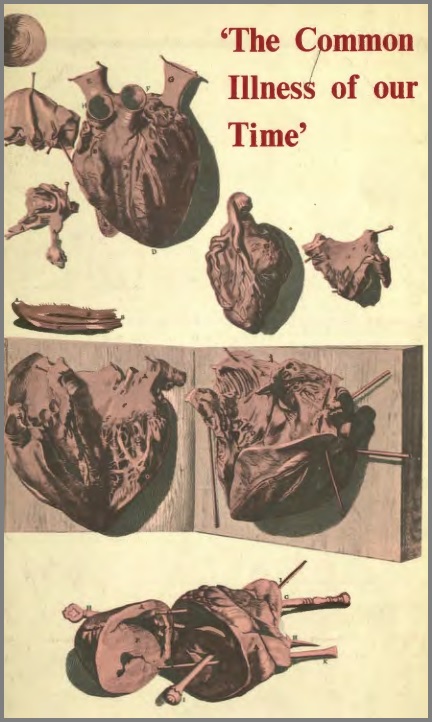Sign up to our newsletter Subscribe
Analysing Global Immunisation Expenditure

In England and Wales in 1963, 187,023 deaths were certified as due to diseases of the heart. These included 154,815 deaths due to arteriosclerotic and degenerative heart disease of which 107,856 were due to arteriosclerotic heart disease, including coronary disease.
Figure 1 shows…
In England and Wales in 1963, 187,023 deaths were certified as due to diseases of the heart. These included 154,815 deaths due to arteriosclerotic and degenerative heart disease of which 107,856 were due to arteriosclerotic heart disease, including coronary disease.
Figure 1 shows the standardised death rates both from all causes and from diseases of the heart during the present century. While the death rate from all causes fell substantially, the rate from heart disease since the 1930s has remained relatively constant. In the first quarter of the century deaths from diseases of the heart represented approximately one in eight of all deaths and by the 1960s this had risen to some one in three. (The overall heart disease rate conceals a slight rise for males over the last 25 years and a slight fall for females.)
There are, however, serious limitations and pitfalls in examining the mortality and morbidity statistics for heart disease, and especially ischaemic heart disease, even within a country at one point in time. The difficulties are greatly increased when making comparisons for different times or between different countries. The difficulties arise in two ways; firstly from the technical progress which has made it easier to detect and define the exact nature of the disease, and secondly from consequent changes in nomenclature.
The first steps towards understanding the nature and causes of heart disease came as a result of post-mortem pathological investigations, and for some time past there has been no ambiguity in the detection of ischaemic heart disease during such examinations. However they are clearly not applicable in assessing the incidence and significance of the disease among the living and they are not generally performed even to confirm the cause of death. Progress towards accurate clinical diagnosis therefore had to await the development of the electrocardiograph. Only since its introduction and with other improvements in technique has clinical diagnosis, in advanced countries at any rate, been possible on a sound and uniform basis. Even now, accurate classification without a post-mortem or precise clinical history may still not be easy. For instance, among the elderly, chronic bronchitis with myocardial degeneration is a common cause of death. Such deaths will be recorded as due either to bronchitis or heart disease depending on the judgement of the doctor. Furthermore, if the cause is diagnosed as heart disease a decision must sometimes be made whether to record the death under arteriosclerotic heart disease, including coronary disease or one of the other headings. It has been shown that even the interpretation of electrocardiograph readings is to some extent subjective, and the opinions of different specialists can vary.
Nomenclature used to describe ischaemic heart disease has been, and often still is, varied. As detection of the disease becomes more exact so the terms used become more precise. Infarction, thrombosis and occlusion were originally pathological terms but, with improvements in the accuracy of diagnosis, are now often used in clinical medicine. Atheroma, atherosclerosis, arteriosclerosis and degenerative heart disease are all terms used in both pathology and clinical medicine. Although even now they are not always used correctly by clinicians the official morbidity and mortality statistics often depend on them. As statistics concerning the disease ultimately depend on descriptions used by doctors, they are not always uniform over time or throughout the world; hence the difficulties in interpreting them. Because of all these variations it is important when discussing ischaemic heart disease to understand its nature, and the terms which are used to describe it.
Common Illness of Our Time: a Study of the Problem of Ischemic Heart Disease
